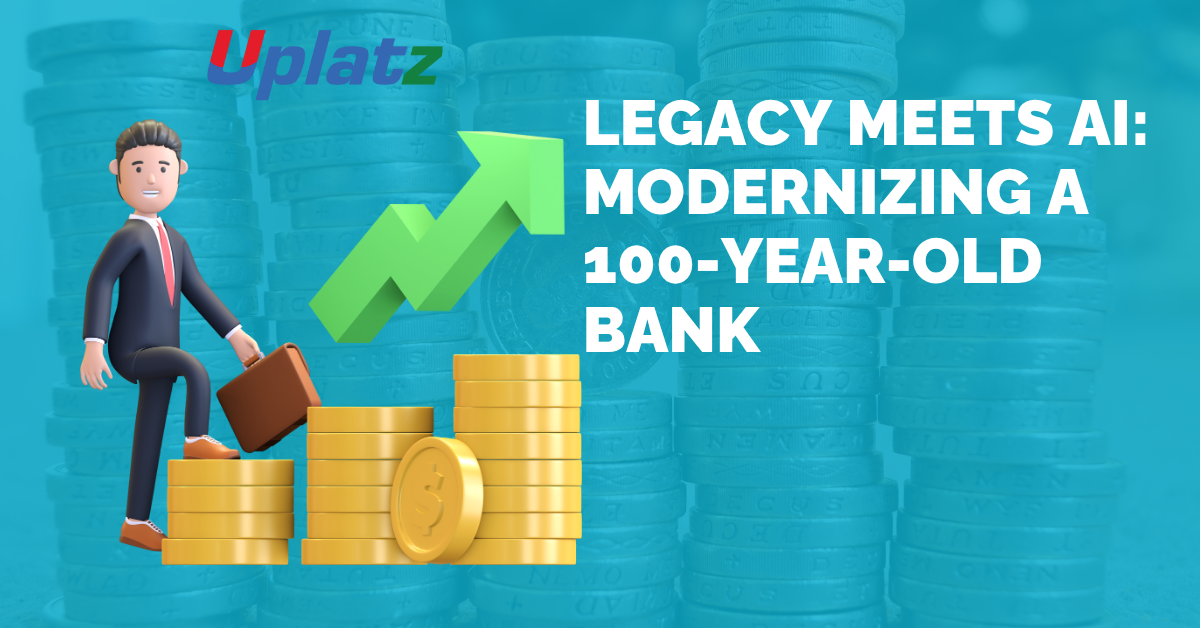📘 Case Study:
“Legacy Meets AI: Modernizing a 100-Year-Old Bank”
Company Background
Sterling & West Bank is one of the oldest financial institutions in the UK, founded in 1918. It has long been regarded as a “quietly reliable” mid-sized retail and business bank, with a strong customer base of over 2.2 million clients. However, its legacy infrastructure, conservative culture, and risk-averse leadership have slowed modernization.
Until recently, S&W’s digital offerings were limited to basic online banking and a mobile app with poor UX. Its internal operations still relied on siloed databases, paper-driven loan approval, and COBOL-based core systems.

Explore the course now: https://uplatz.com/course-details/talend/321
The Call to Transform
In 2024, the board appointed Sophia Ng, a former fintech COO, as Chief Digital Officer (CDO) to spearhead S&W’s modernization. Her mandate: transform the bank into a digitally competitive institution within 3 years—without alienating loyal legacy customers or destabilizing regulatory compliance.
The Transformation Roadmap: “Project Aurora”
Launched in early 2025, Project Aurora has three major components:
- Core System Modernization
- Migrate from COBOL-based infrastructure to a modular cloud-native architecture.
- Integrate real-time APIs and core banking-as-a-service platforms.
- AI-Powered Operations
- Introduce AI for fraud detection, loan underwriting, and customer service chatbots.
- Launch a 24/7 AI virtual assistant for mobile banking.
- Omnichannel Experience & UX Redesign
- Rebuild the website and app for personalized banking journeys.
- Integrate human and digital touchpoints in branches.
Internal Challenges
- Cultural Resistance: 45% of employees have been with the bank for over 15 years. Many middle managers resist “cloud” and “AI” initiatives.
- Data Silos: Siloed legacy systems hinder customer insights and process automation.
- Regulatory Pressure: UK financial regulators require explainable AI and auditable decision-making.
- Customer Fragmentation: Younger users expect frictionless digital UX, while older customers value face-to-face service.
The Strategic Dilemma
Sophia and her team must balance three competing priorities:
- Speed vs. Stability
How fast can the transformation be executed without risking outages, compliance breaches, or customer churn? - Digital Natives vs. Traditionalists
How can the bank appeal to digital-first millennials while retaining its older, relationship-driven customers? - In-House vs. Outsourced Capability
Should the bank build internal AI and cloud talent, or partner with fintechs and SaaS providers?
Snapshot – Sterling & West Bank (2024)
| Metric | Value |
| Total Customers | 2.2 million |
| Active Mobile Users | 460,000 |
| NPS (Digital) | 41 |
| NPS (In-branch) | 73 |
| Avg. Age of Staff | 46.3 years |
| Core IT Stack Age | Avg. 17 years |
| Annual IT Spend | £112 million |
| % Cloud-Based Systems | 18% |
🔍 Student Discussion Questions
Strategy & Transformation
- What should Sophia prioritize in the first 12 months of Project Aurora? Why?
- How should the transformation be sequenced across core banking, AI, and UX modernization?
- What metrics should define success in a banking transformation of this scale?
Technology & Operations
- Should S&W build AI capabilities in-house or outsource? What are the trade-offs?
- How can legacy systems be modernized without interrupting critical services?
- What role can APIs and modular platforms play in breaking down data silos?
Culture & Change Management
- How can Sophia drive cultural adoption of digital within a conservative, aging workforce?
- What training, incentives, and leadership behaviors are needed to make change stick?
Customer Experience
- How can S&W maintain high in-branch satisfaction while scaling digital touchpoints?
- What features or services will most appeal to digital-native banking customers?
